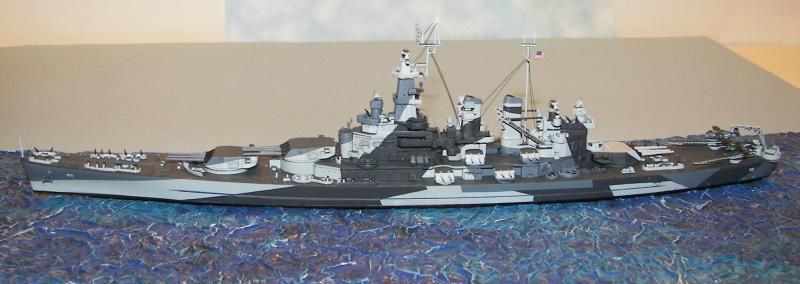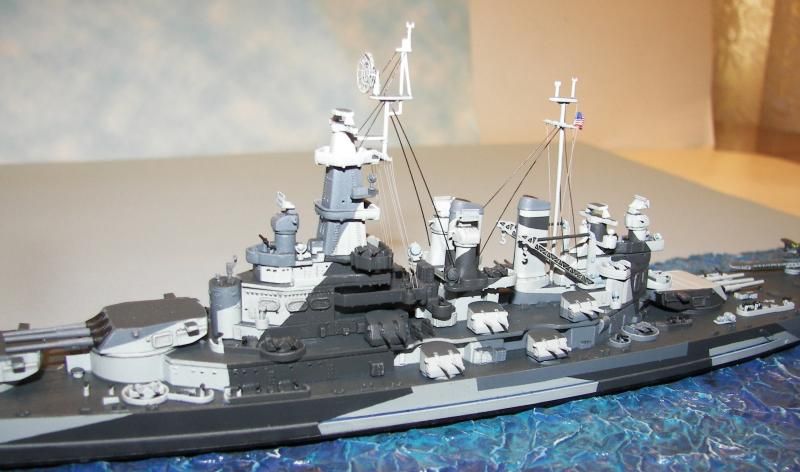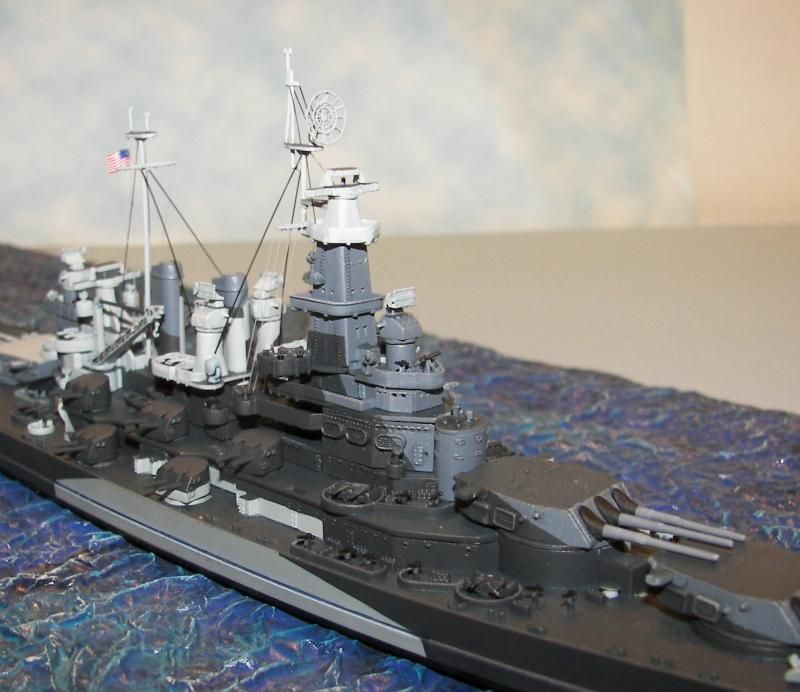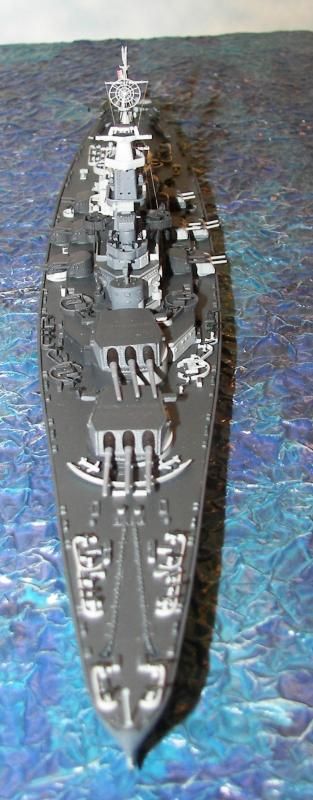U.S.S. North Carolina (BB-55) was the lead ship in the North Carolina-class of battleship, of which there was only one other: U.S.S. Washington. Her keel was laid down on 27 October, 1937 (New York Naval Shipyard), she was launched on 13 June, 1940 , and commissioned on 9 April, 1941. She is considered the first of the U.S. Navy’s “fast battleships,” and the first to be built in at least sixteen years. Her design was influenced and limited by the Washington Naval Treaty and the London Naval Treaty. Captain Olaf M. Hustvedt was in command.
Scheduled to transit to the Pacific Ocean in early 1942, the attack on Pearl Harbor found BB-55 still on the east coast, where she was ordered to remain as a counter to a potential excursion by the German battleship Tirpitz.
By summer 1942, she was ordered to the Pacific, and arrived four days after the battle of Midway. She was assigned to the task force centered on U.S.S. Enterprise (CV-6).
North Carolina took part in the Guadalcanal campaign (the only U.S. battleship in the South Pacific at that time), and participated in the Battle of the Eastern Solomons in August, 1942. Here, she helped provide anti-aircraft defense for Enterprise, and is credited with destroying between seven and fourteen enemy aircraft. Her volume of fire was so massive and intense, that she was signaled by Enterprise: “Are you afire?” In fact, North Carolina was undamaged, but suffered one sailor killed.
On 15 September, 1942, she was damaged at the bow in the Japanese attack that sank the carrier U.S.S. Wasp.
In November, 1943, she participated in the Gilbert Islands campaign and in 1944 the Marshall Islands campaign, the Marianas and the Battle of the Philippine Sea. After the latter encounter, she returned to Puget Sound Naval Yard for a major overhaul, which was finished in October. When she emerged, she carried the particular design of Measure 32/18d in which she is depicted here.
On her return to the theater of combat, by November, she was assigned to Admiral Wm. Halsey’s Task Force 38, and survived Typhoon Cobra. The year 1945 took her to both Iwo Jima and Okinawa. The rest of the year, until the Japanese surrender, saw North Carolina involved in various raids and serving in the screen protecting U.S. naval carriers. She sailed into Tokyo Bay on 5 September, 1945.
BB-55 was decommissioned on 27 June, 1947, and remained on the Navy List until 1 June, 1960. In 1961, she was transferred to the State of North Carolina for a price of $330,000. A memorial museum was dedicated in April, 1962, and you can still visit U.S.S. North Carolina at Wilmington, North Carolina:
http://www.battleshipnc.com/
U.S.S. North Carolina was armed with nine 16-inch guns, twenty 5-inch guns, fifteen quad 40mm AA guns and forty-six single 20mm cannon. She earned fifteen battle stars during World War Ii, and was affectionately known as “the Showboat.”








